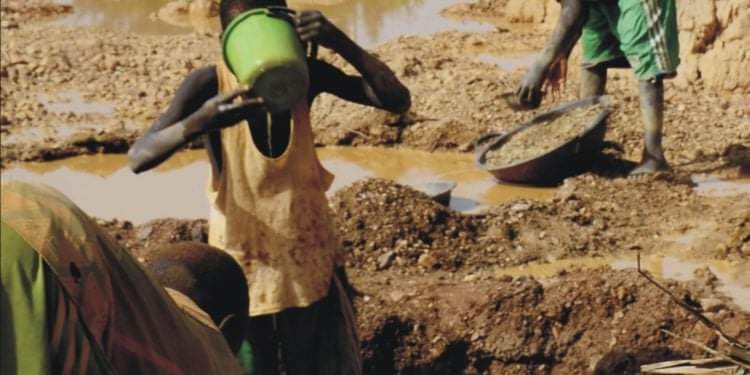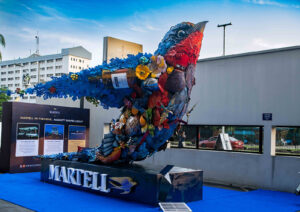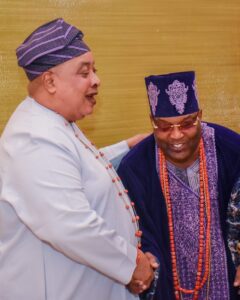
In Maru local council, Zamfara, little boys scorn greening pitches and classrooms for the grim jewellery of the Kadauri gold belt. Despite the government ban on illegal artisanal mining, gold smugglers and prospectors employ out-of-school kids to mine the precious metal in dangerous circumstances, writes Olatunji OLOLADE, Associate Editor.
⦁ How a gold mining boom may kill more children in Zamfara
⦁ Child miners swarm Kadauri gold field, drink mud to sate thirst
⦁ The unholy triad of smugglers, bandits, artisanal miners
Mubaraq Baballe is camera shy. But he shoulders aplomb like a steel amour; amid the dusty plains of Kadauri in Maru local council, Zamfara State, the eight-year-old feverishly digs the earth and shovels sludge everyday, hoping to hit pay-dirt.
Saturday, November 7, was just another day at the factory until The Nation intruded his hustle. Startled, he cringed from the reporter, slinking on back heels. Then he scurried for the hills along with his crew.
The possibility of finding gold or fragments of the precious metal amid mud-piles and earth-crust, however, spurred the eight-year-old to re-emerge from hiding with his crew, defiant yet hopeful that he would not get arrested.
Hope is all’s left for Baballe. The hope of hitting pay-dirt and earning N500 (about $1) for his effort. Sometimes, he gets “lucky” and makes “as much as N1, 000 (about $2) in a day,” he said.
Baballe nurses no lofty dreams of the future. He doesn’t attend a western-styled school. He is in Class Four at a local madrassah in neighbouring Dan Baza, and his needs are simple: to earn a living by artisanal gold mining.
He gives his earnings to his parents “to buy food.” But sometimes, he saves it to buy things for himself, “like a new kaftan or t-shirt,” he said.
The mineral-rich earth of Zamfara State provides Baballe and several other minors with the means to make ends meet. It’s a perilous keep, fraught with attacks by armed bandits prowling the region, and toxic lead deposits in the soil.
Despite its perils, the dazzle of Kadauri’s gold fields lures the eight-year-old and his team to turn up everyday, armed with a shovel, a can-do spirit and dirt-pan.
Baballe is wary of “the police and government people going about to arrest miners,” but he does not understand the magnitude of his work as an outlaw. Perhaps because he’s only a child.
A toothless bark
A few months ago, Zamfara Governor Bello Matawalle, announced a total ban on mining activities in the state and its environs in a bid to curb banditry and restore peace to the state. The decision, he claimed, was informed by intelligence reports suggesting that illegal mining fuels armed banditry in the state.
Hundreds of people have been killed or kidnapped by bandits in Zamfara in the past year, and in the wake of the ban, several miners have relocated from Zamfara to less policed hubs of artisanal mining in Niger and Osun States.
In their absence, field leaders contract underage boys, like Baballe, to fill the vacuum created in the artisanal gold mines. The eight-year-old should be in school but he spends his week days and weekends digging along the gold belt of Kadauri thus accentuating his predicament as one of the 10.5 million out-of-school children in Nigeria – 30 percent are in the North-West (Zamfara, Katsina, Sokoto, Kebbi, Kano) and Niger States in the North Central region.
Crippling poverty and contempt for western education has denied the eight-year-old access to western education. The resurgence of armed banditry across Zamfara, and Maru LGA, where he resides, has also hindered his family’s agricultural business.
Consequently, his family depends on his meagre earnings from Kadauri’s mine pits. Life is hard on the gold fields, but Baballe commits to his task with zest, come rain or sunshine. The fear of sleeping on an empty stomach motivates him everyday.
Children drinking mud in Kadauri’s gold field
While hunger is unbearable by Baballe, he finds it even more difficult to deal with thirst. To soothe his parched throat, the eight-year-old would drink from the stagnant puddle he uses to wash gold dust. It seemed too horrid to be true the first time The Nation caught Baballe drinking from the begrimed pond.
That hot Saturday afternoon, the eight-year-old paused from washing his pile of gold dust, and picked his way across the craters and mine ponds to a corner of the fields, where he and his crew kept their personal effects.
He whipped out a green plastic cup and dipped it into a puddle with a flurry, filling the cup to its quarter. Then he raised it to his lips and drank copiously.
Afterward, he tossed the cup and simply resumed foraging for gold amid the mine fields.
The sparse dialogue of his peers, and the clangour of shovels and steel basins against the stony terrain resonated with crushing symbolism but none was as distressing as the imagery of the eight-year-old quenching his thirst with a cup of muddy water.
Some child miners’ backstory
There is no gainsaying a journey to the Kadaure gold fields manifests as a pilgrimage of sort. Like a lost pilgrim, I suffered a rude jolt watching every nuance of the child miners’ unfurl as vignettes of the human thirst for survival.
Unlike the big, licensed gold prospectors of Zamfara, they are not mining gold for pleasure. They are not doing it for reverence, glory or meaning.
Baballe and his crew toil haunted by poverty and the complexities of their inner lives.
Speaking exclusively to The Nation, each boy recounted the vicissitudes that forced him to become a vulnerable actor in Zamfara’s illicit artisanal gold mining chain.
Thirteen-year-old Naziru Aliyu revealed that he ventured into the illegal enterprise in order to support his impoverished family. The Junior Secondary School (JSS) 2 student earns as much as N2,000 ($4) daily mining gold in Kadauri open fields.
But his namesake and much younger crew member, eight-year-old Naziru, enjoys a raw deal.
At The Nation‘s encounter with him, Naziru, eight, wore his lust like an expensive brocade over his bony frame. Looking severely malnourished, he dug and pounded through rocks, roots and earth-crust with feeble limbs, his slender arms rising and falling mechanically beside his wiry frame; their bony angles belching a story that only hunger pangs could reveal.
The eight-year-old’s shirtless torso revealed the jarring angles of his ribs, their harsh lines shorn of flesh, contracted in sweaty enterprise. Occasionally, he stood and stretched, his gaunt frame towering above the land mass.
The earth unfurled about him carelessly cracked with pits, suffering the underage labourer to foray in and out of their gaping caverns.
Few metres away, his peers bended and strut in menial attitudes; striking extreme poses, like gothic silhouettes carved slipshod across Kadauri’s gold belt.
The cool and indiscriminate glare of sunlight desecrated the field like a tomb, bathing their sullied frames to extort a stream of accidental shadows.
Closer, their hard noises strike one’s face with momentary clarity but the noiseless undertones of their buried narratives pitched like unreal jests made by zest.
There is a backstory to each boy’s presence in the Kadauri gold field. But a recurrent strain recounts how poverty and hunger rendered them vulnerable to older associates and paymasters in Zamfara’s illicit network of artisanal miners.
The latter use them as mules and errand boys in an illicit network that cost Nigeria about $2 billion annually and over N353 billion losses in gold smuggled out of the country between 2016 and 2018, according to Nigerian Extractive Industries Transparency Initiative (NEITI) audits and reports from international sources.
Chinese, Africans in Zamfara’s gold smuggling ring
Two years ago, the Economic and Financial Crimes Commission (EFCC) seized gold worth about $3.13 million (about N1.13 billion) being allegedly exported to Dubai, United Arab Emirates (UAE) illegally. It named one Abba Ali Yahaya as the brain behind the deal.
Apart from impounding his passport, about €112,000 undeclared by Abba, was also seized for alleged violation of the nation’s Money Laundering (Prohibition) Act. The suspect was caught following a tip off after he had managed to pass through all the screening machines without being caught.
The contraband was reportedly handed over to the suspect by a syndicate of illegal miners operating in Zamfara State.
One group that has also received a significant amount of attention is Chinese nationals. Critical to their ability to operate are partnerships with local actors who provide the social capital necessary to operate.
Further findings revealed that some regional chiefs and community leaders have working agreements with foreign partners which ‘permit’ the latter to exploit gold deposits in exchange for a percentage of the gold production.
In a bid to curb such illicit deals, the state government recently repatriated 31 foreigners. The culprits, comprising 11 Chinese and 20 others from Burkina Faso and Mali, were repatriated to their respective countries.
Governor Matawalle blamed the situation on Nigeria’s porous borders.
“We have a porous border particularly between Zamfara, Sokoto and Katsina with Niger Republic which people always use to come in,” he said.
On April 26, 2020, the State Commissioner of Police (CP) Usman Nagogo, led a special taskforce to mining sites in Nasarawa Burkullu village, where they arrested two Chinese nationals running illegal mining operations. The culprits, identified as Mr. Wang and Mr. Chun, were caught with chemicals necessary for processing gold.
On May 21, the Brigade Commander, 1 Brigade Nigeria Army, Gusau, Brigadier-General O. M Bello equally led a team, comprising the Army, Police, and the Department of State Services (DSS) to raid illegal mining sites in Anka, Bukkuyum and Gummi LGAs leading to the arrest of 251 illegal miners comprising 250 Nigerians and one Burkinabe.
What does govt want us to eat? – Illegal miners
Reacting to the raids, artisanal miners in Maru and Anka LGAs, stressed that there was no way they could stop mining. “It is our only means of survival. What does government want us to eat? Bandits have sacked us from our farms. They rob us in our homes. Government is unable to protect us and they haven’t offered us alternative means of livelihood. We can’t stop mining. Even people in government are involved. They only send police after us when we venture into their territories or the territories of their cronies,” said Idris Bala, 52, a miner working from Anka.
Corroborating him, his first son, Abubakar, stated that artisanal gold mining was lucrative until the state government officials and traditional rulers established mining companies and invited the Chinese, Burkinabes and Togolese, to take over the industry.
“They did it for their selfish interests. They are chasing us, poor natives away from the mines, to make way for their partners from abroad. They had been doing it for years until the bandits also decided to venture into the industry. Some of the bandits are even in cahoots with top people in government. Sometimes, they send them to dislodge and scare us off mining sites that they are interested in,” revealed Abubakar.
Economics of using underage miners
In Maru LGA of Zamfara, where the Kadauri gold field is located, there is a ready market for the gold mined by minors as older prospectors buy the gold off them, and in turn, sell it to local middlemen and dealers from neighbouring countries who flood the mining sites.
“The little boys can’t get the gold to Gusau. They don’t deal with the big players because they are like termites on the distribution chain. But they are useful termites…I buy it off them. When they hit gold, they sell it to me right at the mining field or they call my number if I am not in town, then I tell them to hold on to it till I come back,” said Mohammed, 31, a gold prospector working of Maru.
The initial buyer, like Mohammed, who lives in the mining village, is often the local representative of a bigger trader, who finances and mandates buyers, sometimes over a number of mining sites in the region.
Hussein Magazu, 48, owns gold processing factories in Anka and Maru local councils, and he runs an informal but extensive operation for which he recruited local boys, minors and adolescents in particular, to supply him gold dust.
At the peak of his operations, he had 37 boys working for him but since the federal government outlawed artisanal mining in the state, and armed bandits struck Bindim village in Maru on November 8, 2016, killing 45 artisanal miners, 11 of Magazu’s boys have been withdrawn by their parents. The bandits, who arrived numbering about 50, cordoned off the entire area before ransacking the mines, demanding for gold and other valuables from the miners before hacking them dead.
Magazu rued his losses in the wake of the attack stressing that, “I miss my boys. They are cheaper to manage and control. They listen to instructions and brought me sand regularly to grind at my factories.”
According to him, the child miners are less greedy. “They accept N500, N700, and N1,000. They don’t request more. Some of them double as water vendors in my factories. I pay them an additional N100 or N200 depending on how hard they worked.”
Further investigations revealed that most of the child miners belong to farming families that had lost their livelihood in the wake of armed banditry in the state. Left with no means of livelihood, many kids joined their parents to mine for gold illegally.
In Kadauri, Bindim and other parts of Maru, Anka, Bagega, groups of boys set out to mine for gold across established and dormant gold fields. Banking on street smarts, they prospect for gold as independent miners or at the behest of a local middleman or contractor to whom they supply excavated sand or gold dust for a stipend.
The boys often supply the sand with little idea about the quantity of gold lodged in the pile. Where they are working for themselves, they take the sand to contractors like Magazu, who processes it for them – by grinding and washing it – to extract the gold. Afterward, they have to pay and summon their street smarts to negotiate a fair price with the contractor cum owner of the processing plant.
“Many of them do not possess the stamina and expertise to haggle with me hence they often sell the dust to me for a paltry fee of N500 to N1,000,” said Magazu.
How gold is under-priced, smuggled out of Zamfara
The supply chain flourishes by the sale of gold to a second intermediary, the regional trader. The local trader or contractor, who buys gold from the child miners by decigrams can accumulate between 50 and 100 grams of gold before selling this wholesale to the regional trader.
Often the local dealer will melt the gold, losing around 10 per cent as impurities in order to create batches of many tens of grams, which will earn a higher price when sold on. Local buyers are often undeclared when they work in isolation and are generally self-financed.
The gold content is evaluated visually in the field then measured at home using densitometry, applying a pre-determined formula. Quite often, local traders are sent to the mining sites by the regional trader, who is sure to capture all of the available collected gold, in exchange for a percentage commission on the collected quantities; in some cases, he also provides an advance of the working capital needed to collect the gold.
As a result, the buyer is often declared under the cover of the regional trader. So, if the local buyer purchases the gold at a maximum retail price for the gold content of 93% – 94% of the world price from the miners, the regional trader will buy it wholesale at a price equivalent to 97% – 98% of the London Bullion Market Association (LBMA) price.
Once the trader cum big player has accumulated a certain quantity of gold, generally many hundreds of grams, he will travel to the capital, Gusau, to trade it at around 99.2% – 99.5% of the LBMA price. The buyer in Gusau subsequently exports the gold abroad as contraband through the country’s porous borders to Niger, Ghana, Togo or the United Arab Emirates (UAE).
PAGMDI to the rescue?
To cushion the huge foreign exchange revenue loss from gold smuggling, the federal government launched the Presidential Artisanal Gold Mining Development Initiative (PAGMDI), a comprehensive artisanal and small-scale gold mining development programme.
The initiative is designed as a broader strategy to address the structural and institutional factors such as rural poverty, lack of alternative livelihoods, and difficulties in meeting legal and regulatory requirements that tend to push artisanal gold mining operators deeper into the informal economy.
During the unveiling of the country’s first batch of the locally mined gold bars in July, President Muhammadu Buhari enthused that the gold mining operation will generate over $500 million revenue annually and diversify the country’s revenue base.
The price of gold has soared in recent months, fluctuating between a record $1,988.40 and $2,048 an ounce. At current prices, the PAGMI program could add about $500 million to foreign reserves annually, and contribute $150 million in taxes and $25 million in royalties.
The Minister of Mines and Steel, Olamilekan Adegbite, said the federal government has licensed two refineries to refine gold to the London Bullion Market Association (LBMA). He explained that under the new arrangement,“Individuals, corporate bodies, including states and local governments, are free to buy any mineral product through the normal process. We have what we call private mineral buying centres. We issue licences so that anyone that is interested will come to us, and once you meet the criteria, we give you a licence to purchase these minerals.
“And that is the angle that Zamfara State is exploiting. From their own funds, they are buying gold from their people. What they found out was that most of these minerals were being sold to bandits. That was what was fuelling banditry and insecurity in the area.”
What should be done…
Governor Matawalle said his government is ready to reorganise and strengthen local miners with a view to boosting their source of livelihoods. He said, “We want to identify them (local miners) and make them join a cooperative society so that they can be benefiting from mining…We will set up a committee on PAGMI so that they can go round and the government and CBN (Central Bank of Nigeria) will be buying from us directly. It is better that they are selling it very cheap in the mining areas, the federal government, CBN and state can come in, and be buying from this small scale miners.”
Government also needs to restore miners’ access to the global market, perhaps buying artisanal-mined gold even on a tax-free, no-questions-asked basis. Responsible sourcing initiatives should prioritise working with governments and local organisations to improve public infrastructure and services in these mines.
They should facilitate miners’ access to safe mining technologies and financial services so that they can invest in them. Small-scale mining sustains millions of people: with so much else for governments to worry about, keeping these communities thriving should be the main priority, argued Sara Geenen Assistant professor in Globalisation, International Development and Poverty, University of Antwerp.
But that is in the long-run, in the short-run, the Nigerian government must address the perils of child miners prowling the gold belt of Zamfara.
The International Labour Organisation (ILO) estimates that about one million children work in mines and quarries. However, the actual number is probably higher, as the proportion of child miners in some countries is estimated to be as high as 30 to 50 per cent of the workforce.
In Zamfara, many of such children work in extreme conditions in remote areas like Kadauri, and other parts of Maru LGA. Children work in ore extraction and assist in drilling. They push carts, clean galleries, and remove water from the mines. They crush stones, haul minerals, pick gemstones, and wash gold.
They descend to the bowels of the earth to crawl through narrow, cramped, and poorly lit makeshift tunnels, where the air is thick with dust and smothering. They constantly risk fatal accidents due to falling rock, explosions, collapse of mine walls, and the use of equipment designed for adults.
“They do all these without access to essential safety measures and health facilities. It’s a very scary situation. It’s like making them work in a grave. They are denied protection and other necessary safeguards. Many of them will tell you they are doing doing it to help their families. Many of their parents, who are also miners, encourage the kids. They even link them with scouts. As things are, we are toying with another health disaster in Zamfara,” warned Bello Matari, a public health worker based in Gusau.
In 2010, Zamfara State was afflicted by the sudden illness of hundreds of children suffering from vomiting, abdominal pains, headaches, seizures and other health conditions. The respective communities had unknowingly dug into a lead-vein while mining gold ore thus exposing themselves to lead poisoning.
While crushing ore rocks, they released lead-polluted dust into the atmosphere and surface waters. Miners returned home to infect their families via contaminated clothes and tools. Approximately 50 percent of all recorded cases were fatal, leading to the death of over 400 children.
There are fears that the state may suffer yet another disaster, on similar scale, if the government fails to stage an urgent intervention.
Interviews with the child miners of Kadauri revealed that their exposure to injury is high. Abubakar Adamu, 10, sprained his ankle and crashed his groin into a jagged edge of a mine pit after falling into the exposed ditch five months ago. “I missed my steps because it was dark. I couldn’t walk properly for months. And I found it very painful to urinate; every time I did, blood came out with my urine,” he said.
Yahaya, however, struggled to put his grief into words. “Most days, I get tired. When I sleep, its difficult for me to wake up,” he said.
Nonetheless, he stirs everyday and commits to the same endeavour without an exit strategy. Yahaya does not wish to be anything. He simply wishes to mine gold and earn N1,000 everyday.
Aliyu, 13, would love to be a soldier or customs officer but Baballe would rather go to school. The boys are unaware of the magnitude of danger that they flirt with, daily. Except Mohammed Ibrahim.
Ibrahim, nine, learned of the lead poisoning epidemic of 2010 from his mother. He said, “My mother told me that gold killed my brother and sister.” The deceased: Musa, five, and Laraba, four, died of lead poisoning soon after the Medecins Sans Frontieres (MSF) discovered the epidemic in Zamfara in March 2010. About 150 children are yet to recover from the epidemic, according to the MSF.
Experts warned that lead poisoning like Zamfara’s may persist in the environment for up to 15 years resulting in long-term health problems including permanent learning and behavioural problems, and brain damage.
But the child miners of Kadauri are unconcerned. Their struggles blend into the hobbling steps of Zamfara’s brutal re-awakening, as the state drifts between its toxic underbelly and the vague promise of a better tomorrow.
The fates of Ibrahim, Yahaya, Aliyu, Naziru and Baballe, however, resonate a tragedy so overpowering that it becomes a torrent of feelings. Beyond that, there is guilt – that the desire for gold is so strong that it sets the society, like a bird of prey, to stalk their needs and exploit their hunger pangs.
In their sad, sorry world, they work in teams under exploitative agreements with a local paymaster, often receiving a wage or payment in kind.
For children who hit pay-dirt, they find that there is money to be made from gold dust. For those who don’t, dejection pricks their hopes and sinks like claws.
“If I don’t find gold today, I will get lucky tomorrow,” said Baballe in the tenor of a child who knows too well that despair might be circumvented by stubborn will.
Baballe doesn’t care if death reclines in Kadauri’s gold dust. Everyday, he resumes at the mines with theatrical spunk, his wiry limbs digging and shovelling in measured spasms, his frame bent earthward in necessary performance of lust.












